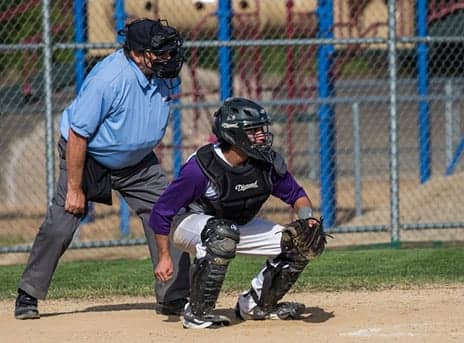High school pitchers who also play catcher tend to experience more injuries than pitchers who play other secondary positions, a study in the Journal of Athletic Training suggests.
Young pitchers already experience high rates of elbow and shoulder injuries because of the significant mechanical demand pitching places on the upper extremity. Pitching accounts for 73% of injuries among high school baseball players, and approximately 10 percent require surgery.
“Our findings suggest that pitchers should consider not playing catcher as their secondary position in order to allow adequate time for recovery and to decrease their overall throwing load,” says NATA member and lead author Elizabeth E. Hibberd, PhD, ATC, assistant professor, the University of Alabama Department of Health Science, in a media release from the National Athletic Trainers’ Association (NATA).
Although pitch limits are well established in baseball, the results from this study indicate that a 2.9 times greater injury risk may result from cumulative throwing load from both pitching and non-pitching activities, and that monitoring pitch counts is not sufficient. Catchers throw significantly more than other fielding positions.
The objective of the study was to compare the rate of throwing-related upper extremity injuries between high school baseball pitchers who also play catcher as a secondary position (pitcher/catcher) and those who do not play catcher (pitcher/other). The researchers studied 384 male high school baseball pitchers from 51 high school teams over 3 years. Of those athletes, 352 (97%) played a position in addition to pitcher, and 32 (8.3%) of them played catcher as their secondary position.
The researchers reported 24 throwing-related shoulder or elbow injuries among pitchers during the study period. Five injuries occurred in the pitcher/catcher group, resulting in an injury rate of 15.6%, and 19 injuries occurred in the pitcher/other group spread among seven other positions, resulting in an injury rate of 5.4%. The proportion of pitchers who developed a throwing-related shoulder or elbow injury during the 3-year study period was 2.9 times greater in pitchers who also served as catchers versus those who did not, the release explains.
The results from the study support findings from previous research, per NATA.
These findings include: Playing catcher when not pitching is a risk factor for severe shoulder and/or elbow injuries requiring surgery; Pitch Smart (an initiative of USA Baseball and Major League Baseball) recommends not playing catcher as a secondary position; and Little League baseball prevents pitchers who throw more than 41 pitches in a game from entering as catchers.
“Players and adults monitoring their play should use the results of our study and previous research and work with athletic trainers to determine the injury prevention techniques to keep athletes in the game,” Hibberd concludes.
[Source: National Athletic Trainers’ Association]





